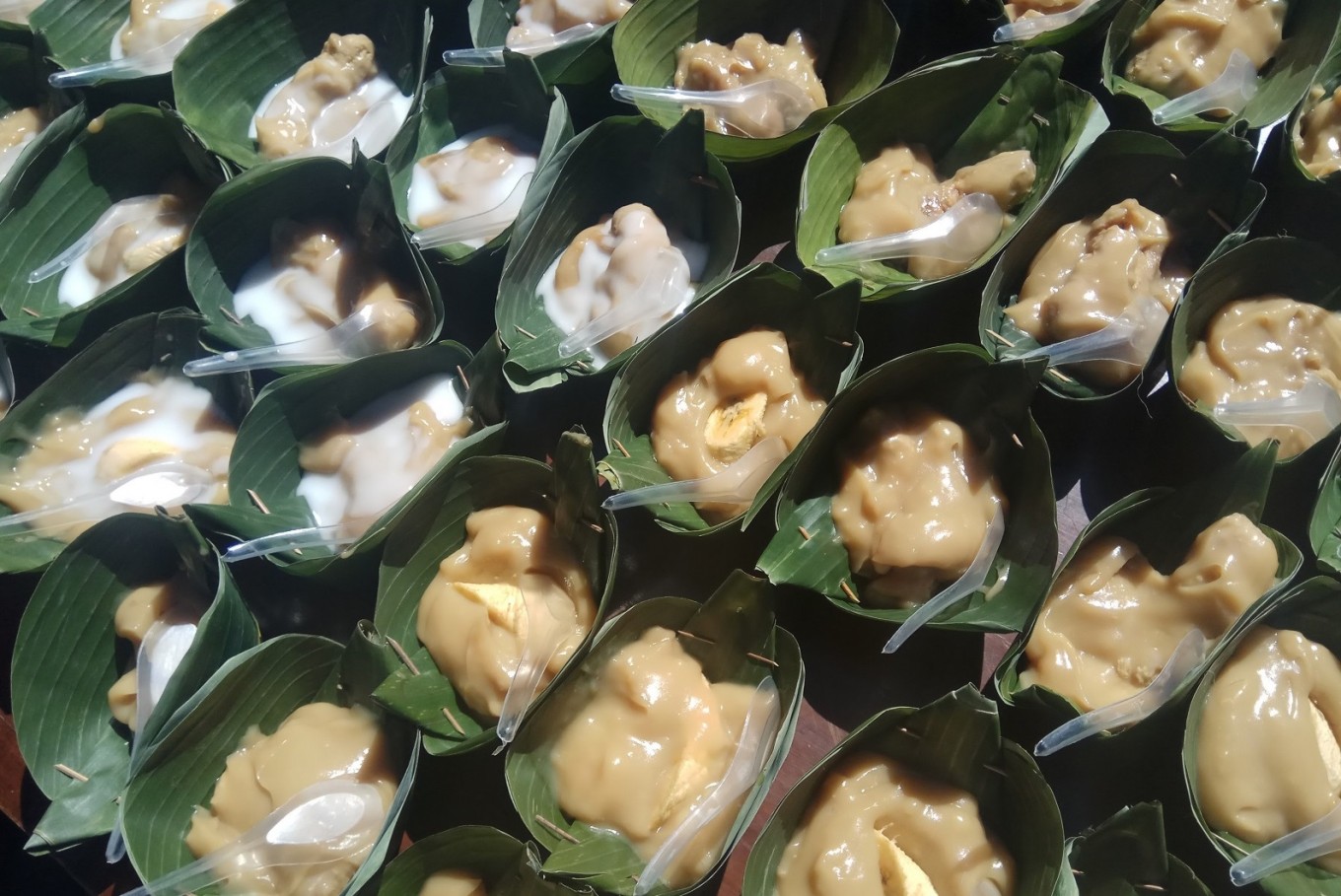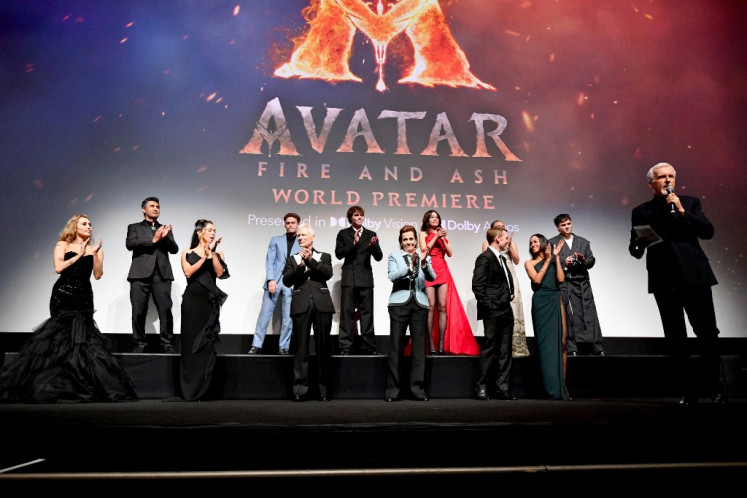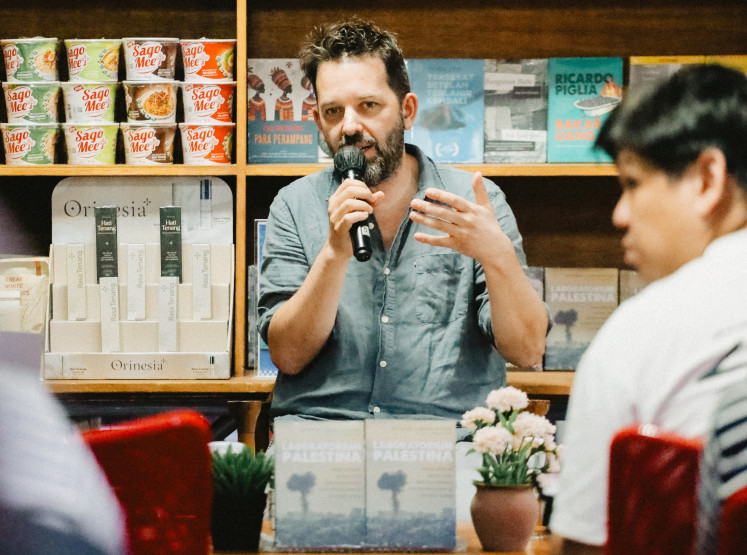Popular Reads
Top Results
Can't find what you're looking for?
View all search resultsPopular Reads
Top Results
Can't find what you're looking for?
View all search resultsEnjoying legendary 'Jenang' in Surakarta
Change text size
Gift Premium Articles
to Anyone
S
awitri, 21, moved from one stand to the next. She had already tasted three different types of jenang (porridge served with brown sugar or coconut milk) by the time she visited the Jenang Katul stand. The student at the Indonesian Art Institute in Surakarta admitted it was her first time tasting jenang.
“I was told that jenang is legendary. My grandmother told me jenang katul helped a lot of people when Indonesia was facing food shortages decades ago,” she said.
Jenang katul is made from bran, the hard outer layers of grain. In Indonesia, katul or bekatul is better known as an animal feed.
Sawitri enjoyed the jenang given out for free at the Semarak Jenang Sala festival (Surakarta Jenang Festival) at the Vastenburg Fort, Surakarta, Central Java on Feb. 17.
“It tastes so good, savory and sweet. If someone had never told me, I wouldn’t believe this is made from bekatul ,” she said.
There were a total of 17 kinds of jenang served at the annual festival, ranging from jenang grendul (made from coconut milk, glutinous rice flour, tapioca flour, palm sugar and pandan leaves), jenang pati (tapioca flour and cassava), to jenang sumsum (rice flour, coconut milk and palm sugar syrup).
Read also: Eight places to visit in Surakarta
In Javanese tradition, jenang is considered more than merely food. In a praying ritual for well-being, it is a necessity. In the lives of the Javanese from birth till death, jenang is almost like an intimate family member.
“The red and white colored jenang is always present in every Javanese ritual or traditional ceremony, representing where human beings come from and is considered as a well-being jenang,” stated ST Wiyono, an artist from Surakarta.
Unfortunately, Wiyono said a larger part of society has started to forget the spiritual values behind jenang. They would acknowledge it as baby food or something to eat only when we fall ill.
“The traditional, spiritual and cultural values of jenang need to be reinstated. We can’t let Javanese people lose their Javanese traditions,” he said.
It was one of the reasons why the Surakarta administration held the jenang festival. This year’s event marked the sixth festival since it began in 2012, in conjunction with the anniversary of Surakarta.
As many as 273 jenang stands were at the festival, involving every element of society such as the government, traditional groups, hotels and individuals. No less than 27,300 jenang were given away for free.
The festival began with a parade of 17 kinds of jenang starting from Surakarta City Hall, which was attended by Surakarta Mayor FX Hadi “Rudy” Rudyatmo, Surakarta Deputy Mayor Achmad Purnomo, members of Surakarta People’s Representative Council, artists and public figures.
Read also: A mash of Chinese New Year, cultural diversity in Surakarta
“Since the first festival in 2012, jenang has found its place in prestigious hotels and become a distinct addition to their menus. They would serve it in the traditional way on banana leaves. So please, leave behind any thought of jenang being pedestrian,” said Rudy.
Heri Priyatmoko, a historian from Surakarta, stated that jenang has a history of more than one hundred years and it can still be found easily. This is because the people still believe in its philosophical values.
“Jenang is less popular than modern food such as pizza, donuts or brownies. But it will never disappear,” said Heri.
He said the festival is a good way to document as well as preserve jenang. He hopes people will see it as a unique type of food, to be consumed as any other modern food.
“Jenang used to be served on banana leaves, eaten with suru (spoon-shaped banana leaves). They have been replaced by bowls and spoons, but that’s the way it goes,” said Heri. (wen)











